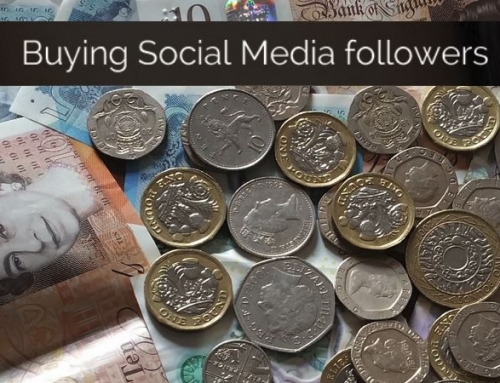There are two things that make working with social media (and marketing in general!) so interesting and challenging. The first is that “social media” looks completely different for almost every type of business.
The challenges around recruiting and engaging a prospective customer audience, and then “nudging” them to take action, are going to be utterly different if you’re promoting a wedding venue versus selling funeral insurance.
The second is that the devil is always, always, always in the detail – which is why generic advice can often seem so plausible and yet be so frustratingly unhelpful when you try to apply it to your specific business.
This is beautifully illustrated by this recent post: You can’t buy love: stop wasting money on Google Adwords. It’s a great article, the kind I wish there were more of on marketing blogs these days – specific, detailed and honest. Matthew says
Over the course of two years I spent more than £25,000 on AdWords…but I never managed to get a cost of customer acquisition below the average first year’s revenue per customer.
Believe me, I tried to make it work. I optimised my ads, tweaked my landing pages and redesigned my website. Even after reading countless articles and a 500-page book on how to ‘do’ AdWords, I resorted to hiring an AdWords ‘consultant’. None of it made any difference.
Many of us have been there. Putting in hours and hours of work and significant amounts of budget, only for the ultimate measure (revenue vs cost of acquisition) to keep failing. Plus, the actual process is painful:
Most online advice about AdWords will tell you spend more time or money making it work. But Google AdWords is so complicated, wrapped in a geeky illusion of data and control, that it takes a long time to realise you’re lost.
Yes. Ouch. The data blindness is real!
And while some of that rang very very true for me personally, some of it didn’t, and Google Adwords absolutely has worked for my business and for *some* of our clients.
So that got me thinking about what the difference was. And guess where that devil is? yeah. The detail that leapt out to me is that for Adwords to work, there has to be a link between the customer’s search behaviour and a buying intent. There are things that, I would speculate, people just don’t know they want to buy so never go searching for them on Google. A gorgeous piece of furniture, say – you might not *need* it, but if you saw it pop up on a social media feed, you might be tempted. (Conversely not too many people get tempted into a new car batttery because it pops up on Facebook – you either need it or you don’t, and if you do, you want the best value option!)
Then there are things that prospective customers do know they want, but Google just isn’t their chosen research option, for whatever reason (example: builders, plumbers, SEO providers. Google search results are so awful / manipulated for those things that I’d not bother with it at all, which also knocks out the advertising opportunity. I’d always and only go for personal recommendations for those things. Might be just me, but you see what I mean!).
Then there are products and services that, for whatever reason, people do tend to check out on Google. Social Media training is one of those things, so in the early days we benefitted very much from being able to have a “quick win” of paying to get in front of those buyers. We don’t use it much these days (the data pain got really old, as did the arbitrary “trademark” restrictions – suddenly we can’t use “Facebook” in our ads, but our competitors somehow still could! – and the escalating costs) but it was effective for a particular task at a particular time. I have similar stories from other clients.
The wider point here is, that when you’re planning your marketing, you absolutely have to question the details and the reality for YOUR specific business.
This is even more true with social media marketing, where nuances around the type of product, market positioning, price point, target market demographics, how mature the company is, and many other elements, can make a huge difference as to whether a strategy works or not.
When you’re making calls about how to allocate your budget, a working knowledge of how those factors interact with the characteristics of the main social media platforms is hugely helpful. And finally: you’re allowed to ignore the generic “Ten No Fail Ways to Skyrocket your Twitter sales” articles and not feel bad about it, either.







Leave A Comment